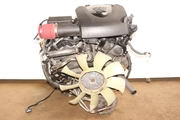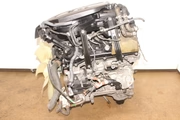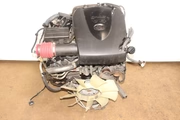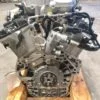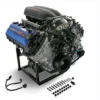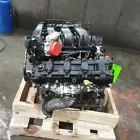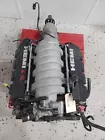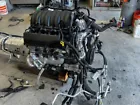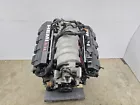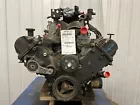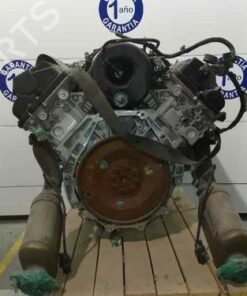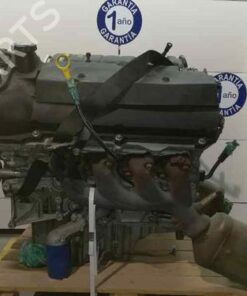3 5l v6 2grfk engine
2,000 $ Original price was: 2,000 $.1,700 $Current price is: 1,700 $.
The 3 5l v6 2grfk engine is part of Toyota’s GR family of engines, a 3.5L V6 that utilizes direct injection and Variable Valve Timing (VVT-i) technology. This engine is primarily known for its performance in various Toyota and Lexus vehicles. The 3 5l v6 2grfk engine is a refinement of the 3 5l v6 2grfk engine, providing improvements in fuel efficiency, performance, and emissions. 3 5l v6 2grfk engine
3 5l v6 2grfk engine The 2GR-FK Engine is part of Toyota’s GR family of engines, a 3.5L V6 that utilizes direct injection and Variable Valve Timing (VVT-i) technology. This engine is primarily known for its performance in various Toyota and Lexus vehicles. The 3 5l v6 2grfk engine is a refinement of the 3 5l v6 2grfk engine, providing improvements in fuel efficiency, performance, and emissions.
Key Features of the 3 5l v6 2grfk engine:
1. Displacement & Configuration
-
Displacement: 3.5L (3,456 cc)
-
Configuration: V6, with a DOHC (Double Overhead Camshaft) design.
-
Fuel System: Direct Injection (DI), which improves power output and fuel efficiency compared to traditional port injection.
-
Bore x Stroke: 94.0mm x 83.0mm.
2. Technology & Performance Features
-
VVT-i (Variable Valve Timing-intelligent): This system adjusts the timing of the intake and exhaust valves to optimize performance, fuel economy, and emissions across different engine speeds.
-
Direct Fuel Injection (DI): Helps improve fuel atomization, increase power output, and optimize fuel economy.
-
Compression Ratio: 11.8:1, which is higher than older models, contributing to better fuel efficiency and more power.
3. Power and Torque Output
-
Horsepower: Approximately 296 hp at 6,600 RPM.
-
Torque: Around 263 lb-ft at 4,700 RPM.
-
Redline: Approximately 6,800 RPM.
4. Applications
The 3.5L V6 2GRFK Engine is used in various Toyota and Lexus models, most commonly in mid-sized sedans and SUVs, as well as in some sports vehicles and hybrid configurations.
-
Toyota Camry (Sportier trims and Hybrid variants)
-
Lexus RX350
-
Lexus ES350
-
Toyota Highlander (Certain trims)
-
Toyota Sienna (Minivan)
-
Toyota Avalon (Certain trims)
-
Toyota Venza
Performance Characteristics
-
Power Delivery: The 3 5l v6 2grfk engine delivers a good balance of power and fuel economy, producing 296 horsepower while maintaining solid torque for mid-range acceleration. It’s well-suited for both daily driving and occasional spirited driving.
-
Smoothness: The V6 is smooth and refined, with minimal vibration, and it provides a satisfying engine note when you put your foot down.
-
Fuel Efficiency: Due to Direct Injection and the VVT-i system, fuel efficiency is better than many older engines in the same class. Expect around 21–24 mpg city and 30+ mpg on the highway, depending on the application and driving conditions.
Modifying the 3 5l v6 2grfk engine
Although the 3-5l-v6 2grfk-engine already a highly refined engine, if you’re looking to squeeze more power or optimize its performance, you can consider these modifications:
1. Cold Air Intake (CAI)
-
Why: Replacing the stock intake with a cold air intake helps increase the volume of cooler, denser air entering the engine, leading to improved combustion, throttle response, and a slight increase in horsepower.
-
Expected Gains: Around 5–10 hp, depending on the quality and tuning.
-
Brands to consider: K&N, AEM, Injen, Takeda.
2. Exhaust System Upgrades
-
Cat-Back Exhaust: A performance exhaust system can reduce backpressure and help the engine breathe better, improving power output and giving the engine a more aggressive exhaust note.
-
Headers: Replacing the stock exhaust manifold with performance headers can add additional horsepower and torque, especially at higher RPMs.
-
Expected Gains: 10–15 hp for a cat-back exhaust, 15–20 hp with performance headers.
3. ECU Tuning/Performance Chip
-
Why: Tuning the ECU (Engine Control Unit) optimizes the engine’s timing, fuel mixture, and air-fuel ratio, giving you a better throttle response and unlocking some additional horsepower. Tuning can also improve fuel efficiency under normal driving conditions.
-
Tuning Software/Tools: ECUtek, HP Tuners, or Cobb Tuning.
-
Expected Gains: Up to 20–30 hp when combined with other mods.
4. Forced Induction (Supercharging or Turbocharging)
-
Supercharger Kits: Adding a supercharger can significantly increase the engine’s power output by forcing more air into the intake, resulting in more fuel to burn.
-
Turbo Kits: Turbocharging can also significantly boost power and torque, with the advantage of better fuel efficiency when driven conservatively (compared to a supercharger).
-
Expected Gains: 100–200 hp, depending on the boost level and supporting mods (fuel system, cooling, etc.).
-
Brands: Vortech, Apex’i, Greddy, CXRacing.
5. Fuel System Upgrades
-
Why: If you’re planning to increase the engine’s power output significantly, upgrading the fuel system is necessary to support the increased air intake. This might include upgrading fuel injectors, fuel pumps, and fuel regulators.
-
Expected Gains: Ensures consistent power delivery, especially with forced induction.
6. Suspension and Handling Upgrades
-
Although not directly related to the engine, improving your car’s suspension (especially on models like the Lexus RX350 or Toyota Avalon) can improve handling and overall driving dynamics.
-
Coilovers, sway bars, and bushings can significantly improve cornering stability, especially when the engine upgrades have made the car quicker.
Reliability and Maintenance
The 3 5l v6 2grfk engine engine is known for being quite reliable, but there are still things to keep in mind for long-term care.
1. Oil Changes
-
Always use high-quality synthetic oil with the correct viscosity. Toyota recommends 0W-20 or 5W-30 oil for most vehicles with the 3 5l v6 2grfk engine
-
Change oil every 5,000–7,500 miles, depending on your driving conditions. If you’re running the engine hard or under load often, you might want to change it more frequently.
2. Timing Chain and Components
-
The 3-5l-v6 2grfk-engine uses a timing chain, which is generally more durable than timing belts. However, ensure that the chain tensioner and other components are checked for wear at regular intervals.
-
There have been reports of timing chain tensioner issues in older variants, so it’s good to keep an eye on your engine’s performance and listen for any unusual noises.
3. Carbon Build-Up (Direct Injection)
-
Like most direct-injection engines, the 3 5l v6 2grfk engine is prone to carbon buildup on the intake valves because the fuel is injected directly into the combustion chamber, bypassing the valves.
-
Symptoms: Rough idle, poor fuel economy, or engine misfires.
-
Solution: Regular fuel system cleaning or a walnut blasting procedure to clean the intake valves can help mitigate this issue.
4. Cooling System
-
The cooling system should be checked regularly. If you’re adding forced induction or significantly increasing engine power, consider upgrading the radiator or adding an oil cooler to handle the extra heat.
Key Applications of the 3 5l v6 2grfk engine
This engine is found in a variety of Toyota and Lexus models, so it has proven versatility across different types of vehicles:
-
Toyota Camry (Sporty trims): Often paired with the SE or XSE trims.
-
Toyota Highlander: Used in higher trims for a balance of power and efficiency.
-
Lexus RX350: Provides a blend of luxury and reliable performance.
-
Toyota Venza: A hybrid option with the 3-5l-v6 2grfk-engine in certain configurations.
-
Lexus ES350: Provides the 2GR-FK with upscale features and refinement.
Pros and Cons of the 3.5L V6 2GRFK Engine
Pros:
-
Powerful and efficient for a V6 engine.
-
Good balance of power and fuel economy.
-
Smooth and refined operation, making it ideal for daily driving.
-
Reliable with proper maintenance.
-
Aftermarket support for performance upgrades.
Cons:
-
Direct injection can lead to carbon build-up over time, affecting performance.
-
Not the most powerful V6 in Toyota’s lineup (e.g., the 3.5L V6 found in the Tacoma or 4Runner produces more torque).
-
Forced induction modifications can put stress on the engine if not carefully monitored.
Related products
Engine
Engine
Engine
Engine
Engine


